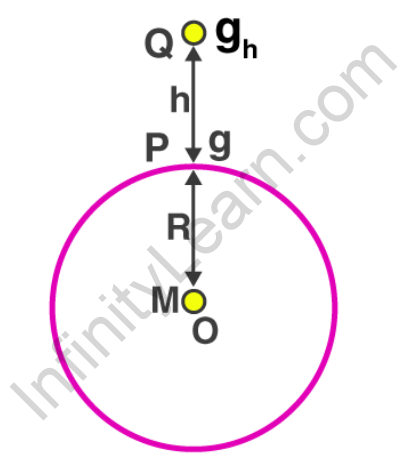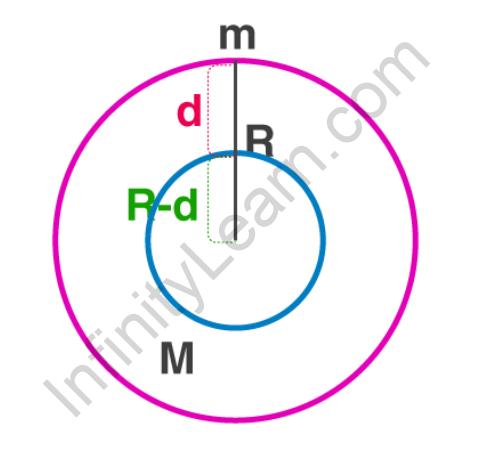Table of Contents
Did you know that the distribution of mass within Earth or another celestial body determines the attraction or potential of gravity? The geometry of the surface where the potential is constant is affected by the distribution of matter. To understand how the value of acceleration due to gravity was affected, let’s start with the basics.
Firstly, what is acceleration due to gravity? The acceleration gained by an object as a result of gravitational force is referred to as its acceleration due to gravity. It has the SI unit of m/s2. Gravitational acceleration is a vector, meaning it has a magnitude as well as a direction.
The acceleration due to gravity at the Earth’s surface is denoted by the letter g. It has a standard value of 9.80665 m/s2 (32.1740 ft/s2) defined. The actual acceleration of a body in free fall, on the other hand, varies depending on location.
The Earth is not perfectly spherical. It is similar to a “squashed” sphere, with the equator’s radius slightly larger than the poles’. This has the effect of slightly increasing gravitational acceleration at the poles (because we are near the centre of the Earth and gravitational force varies with distance) and slightly decreasing it at the equator.
Additionally, due to centripetal acceleration, gravity’s acceleration is slightly less at the equator than at the poles. Variations in the density of rock beneath the ground or the presence of mountains nearby can have a minor effect on gravitational acceleration.
Latest: JEE Main 2024: College predictor
Join Our Courses: JEE Class 11 Students | JEE Class 12 Students | JEE Dropper
Acceleration due to Gravity Overview
Gravity is the universal force that attracts all things or matter in the universe. It could be viewed as the driving force that holds everything together. The acceleration or movement imparted by gravity on freely falling objects is measured. At the Earth’s surface, gravity accelerates at a rate of approximately 9.8 m/s2. As a result, an item’s speed increases by approximately 9.8 m/s2 for every second it is in free fall. The following factors have a significant impact on gravity:
- Matter and gravity are inextricably linked, which means that matter is directly proportional to gravity. The stronger the attraction, the more matter there is.
- The sun and stars, for example, have a higher g.
- There is also a direct relationship between the mass of the object and gravity. That is, as mass increases, so do gravitational attraction.
- In addition, gravity is inversely proportional to the distance between two objects.
Variation of g with height and depth: The acceleration due to gravity, or g, varies with height and depth with respect to the earth’s surface. This means that the value of g at the top of a mountain will not be exactly the same as the value on the earth’s surface. Similarly, the value of g at a location significantly below the earth’s surface will not be equal to the value of g at the earth’s surface. This is referred to as g variation with height and depth. The formula g1 = g (1 – 2h/R) expresses the variation of g with height. The formula g2 = g (1 – d/R) expresses the variation of g with depth.
Acceleration due to Gravity
Gravity is the force that pulls a body towards the centre of the Earth. Consider the masses of two bodies, ma and mb. When equal forces are applied to two bodies, the force in terms of mass is given by: mb = ma [aA/aB]This is referred to as a body’s inertial mass. The gravitational force between two bodies causes
- FA = GMmA/r2,
- FB = GMmB/r2,
- mB = [FB/FA] × mA
The above-mentioned mass is known as a body’s gravitational mass. The inertial mass and gravitational mass are identical, according to the principle of equivalence. This will be used to calculate acceleration due to gravity, as shown below. Assume a body [test mass (m)] is dropped from a height ‘h’ above the earth’s surface [source mass (M)], it begins to move downwards with increasing velocity as it approaches the earth’s surface.
We know that the velocity of an object changes only when it is subjected to a force, in this case, gravity. Due to the action of gravitational force, the body begins to accelerate toward the earth’s centre, which is at a distance ‘r’ from the test mass. After that, ma = GMm/r2 (Applying principle of equivalence) ⇒ a = GM/r2 Because the above acceleration is due to the gravitational pull of the earth, we refer to it as acceleration due to gravity; it is independent of the test mass. It has a value of 9.8 ms-2 near the earth’s surface. As a result, the gravity acceleration (g) is given by = GM/r2.
Join our specially curated JEE course to make your IIT dream come true. If you live in Patna then prepare from the best IIT JEE coaching center in Patna.
Watch Session on Our YT Channel
Acceleration due to Gravity on the Surface of Earth
The Earth is assumed to be a solid, uniform sphere with a mean density. We are aware of this. Mass/volume = density ρ = M/[4/3 πR3] ⇒ M = ρ × [4/3 πR3] So, g = GM/R2. When we substitute the values of M, we get g = 4/3 [πρRG] At any ‘r’ distance from the earth’s centre g = 4/3 [πρRG] The value of gravity’s acceleration, ‘g,’ is affected by
- The height above the earth’s surface.
- The depth beneath the earth’s surface.
- The form of the earth.
- The earth’s rotational motion.
Variation of g with Height Gravity’s acceleration at a height (h) above the earth’s surface

Consider a test mass (m) at a height (h) above the earth’s surface. Now, the gravitational force acting on the test mass is;
F = GMm/(R+h)2
The mass of the earth is M, and its radius is R.If the gravitational acceleration at a given height is ‘h,’ mgh= GMm/(R+h)2 ⇒ gh= GM/[R2(1+ h/R)2 ] The acceleration due to gravity on the earth’s surface is given by; g = GM/R2 gh = g (1+h/R)-2 At a height above the earth’s surface, this is the acceleration due to gravity. According to the formula above, the value of g diminishes as an object’s height increases and eventually becomes 0 at an infinite distance from the earth. When h << R, gh = g/(1 – 2h/R) gives the value of g at height ‘h’. Variation of g with Depth Consider a test mass (m) taken to a distance (d) below the earth’s surface; the acceleration due to gravity at that point (gd) is obtained by multiplying the value of g by the density of the earth.

The value of g on the earth’s surface is given by; g = 4/3 × πρRG The acceleration due to gravity at a distance (d) below the earth’s surface is given by; gd = 4/3 × πρ × (R – d) G When we divide the above equations, we get gd = g (R – d)/R. Now you can find answers to all your subject queries & prepare for your Exams on our Ultimate Learning App for CBSE and K-12 – Infinity Learn.
Watch JEE Related Session Videos on Our YT Channel
| Title | Links |
| My Jee Preparation Journey: How I cracked IIT | Click Here |
| most important questions and concept of chemistry from high weightage chapters | Click Here |
| NTA Based Full Maths Paper Predictor | Click Here |
| Low Marks in Mocks? Stuck? Here’s How to Increase Your Score | Click Here |
| Full Revision – Mechanics (Linear + Rotational) – must do problems | Click Here |
| JEE Main 2025 | Last 20 Days Strategy to Score 150+ in Jan Attempt | JEE 2025 | Click Here |
| Menti Maths Vs Chemistry: Full Syllabus Mock Test | Click Here |
| Last 10 Days Strategy For Jee Main 2025 Jan Attempt | Click Here |
| NCERT Challenger for JEE Mains 2025 (20 Best Questions of GOC) – Newly framed & Best PYQ | Click Here |
| Test Your Preparation – Gravitation – Challenging Questions for JEE 2025 | Click Here |
| Jee Advanced Questions Important For Jee Main 2025 | Click Here |
| D & F Block in one shot – Newly framed & Best PYQ for JEE Mains 2025 | Click Here |
| Electrostatics – Questions to boost your rank – Part 1 | Click Here |
| Jee 2024 Most Repeated Questions From All 20 Shifts | Click Here |
| Mock test for Complete Inorganic Chemistry – 1 (for JEE Mains 2025) | Click Here |
| Expected Marks Vs Percentile For Jee main 2025 Jan Attempt | Click Here |
| 12 Hours Marathon | Complete Organic Chemistry | Last Minute Revision | Click Here |
| Jee Main 2025 January Attempt Paper Prediction | Click Here |
| Dual Nature of Radiation and Matter | Click Here |
| Which Attempt is Important Jan Or April ? | Click Here |
| 300 Most Expected JEE Mains 2025 Questions |Non Stop 6 Hours Marathon | Paper Predictor | Part 1 | Click Here |
| 300 Most Expected JEE Mains 2025 Questions |Non Stop 6 Hours Marathon | Paper Predictor | Part 2 | Click Here |
| 300 Most Expected JEE Mains 2025 Questions |Non Stop 6 Hours Marathon | Paper Predictor | Part 3 | Click Here |
| 300 Most Expected JEE Mains 2025 Questions |Non Stop 6 Hours Marathon | Paper Predictor | Part 4 | Click Here |
FAQs on Acceleration due to gravity
Why is g called a universal constant?
The value of the g (constant of gravitation) does not change with the nature, mass or the size of the material particles.
Does acceleration due to gravity change with depth?
When R becomes less this value also decreases. Thus, acceleration due to gravity decreases with increase in depth.
What is the SI unit of universal gravitational constant?
The SI unit of universal gravitational constant is- Nm2kg−2.
What is the variation of gravity with altitude?
The gravitational acceleration decreases with altitude.
How do you calculate gravity's acceleration?
Because the above acceleration is due to the gravitational pull of the earth, we refer to it as acceleration due to gravity; it is independent of the test mass. It has a value of 9.8 ms-2 near the earth's surface. As a result, the gravity acceleration (g) is given by = GM/r2
What is acceleration due to the gravity?
The acceleration due to gravity refers to the acceleration acquired by an object as a result of the gravitational force acting on it. Its unit in the International System of Units (SI) is meters per second squared (m/s²), and it possesses both magnitude and direction, classifying it as a vector quantity. At sea level on the Earth's surface, the standardized value for acceleration due to gravity is 9.8 m/s². This value is denoted by the symbol 'g' and is influenced by factors such as the mass and radius of the Earth. As a vector, the acceleration due to gravity is characterized by both magnitude and direction, represented by the letter 'g,' with a typical value of approximately 9.8 m/s² at the Earth's surface.
What do you mean by acceleration due to gravity?
Gravity makes things fall down. The acceleration due to gravity is how fast something speeds up when it's falling because of gravity. It's like a push pulling things toward the Earth. This acceleration has a regular value, about 9.8 meters per second every second, especially on the ground. We call this value g. G is crucial in science because it helps us understand why things fall and how they move when gravity is involved.
What is the g value?
The g value, which stands for the acceleration due to gravity, is roughly 9.8 meters per second squared when you're on the Earth's surface. This number tells us how fast something speeds up as it falls because of gravity. It depends on how big the Earth is and how much stuff is in it. Understanding g is really important in physics because it helps us explain why things fall and how they move when gravity is involved.







